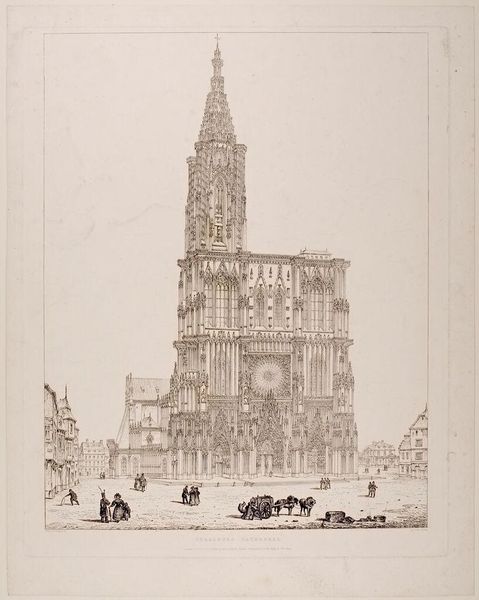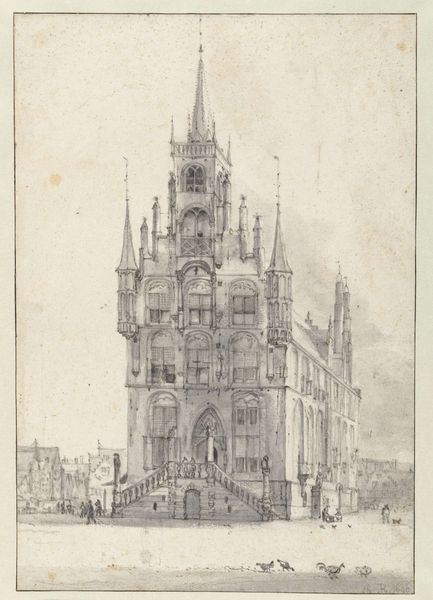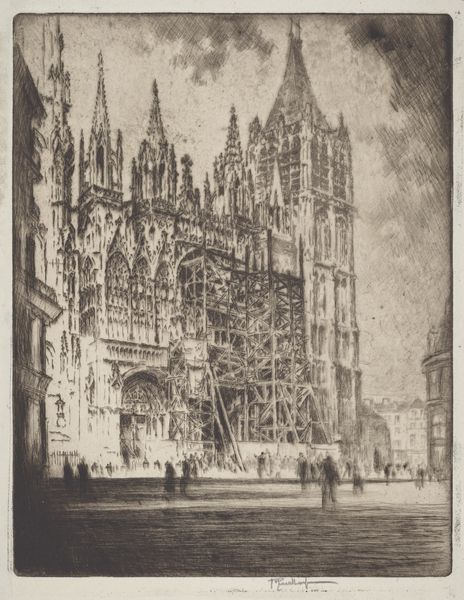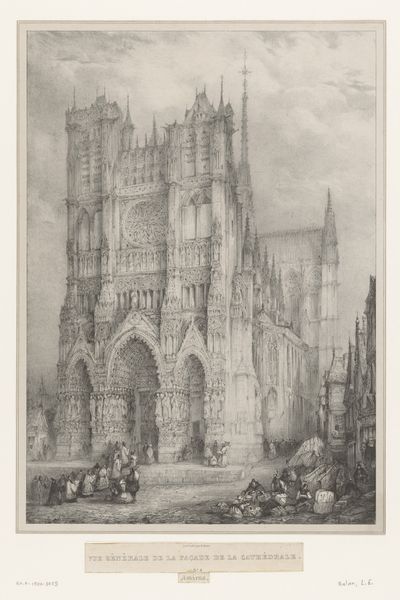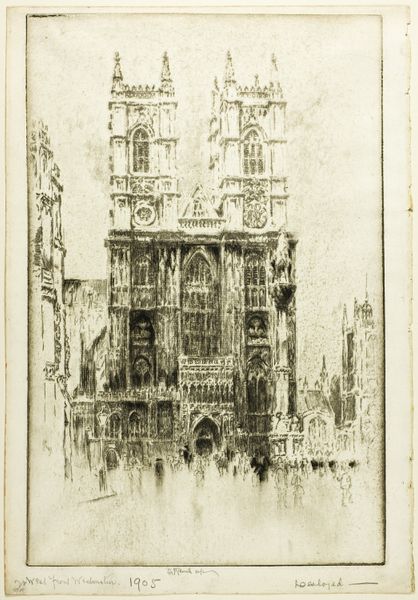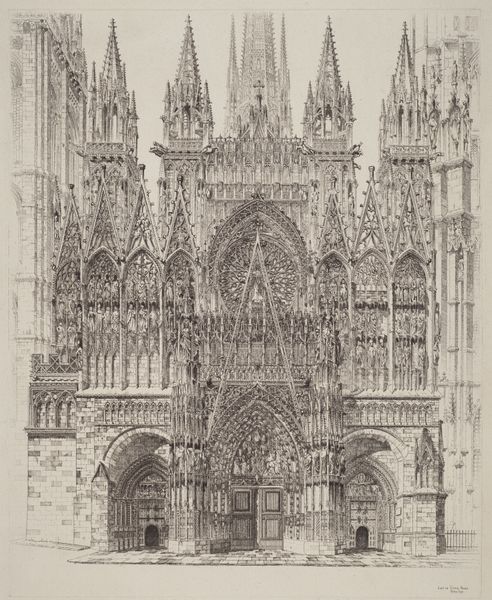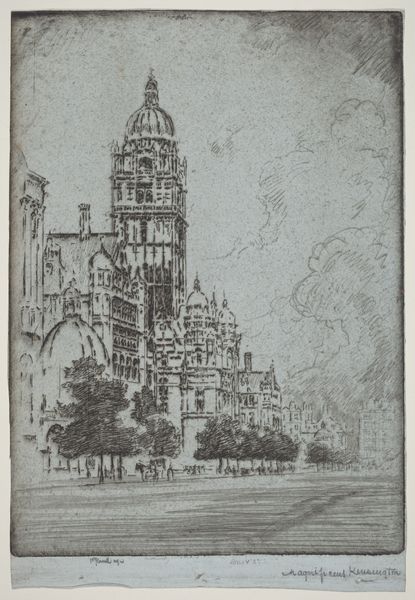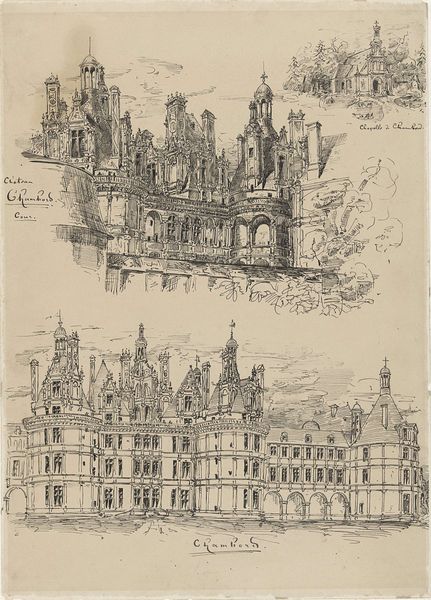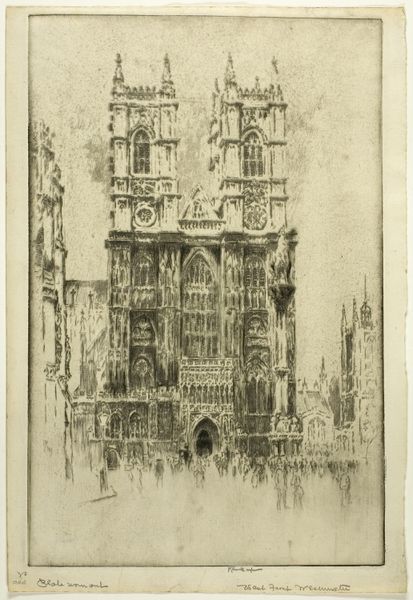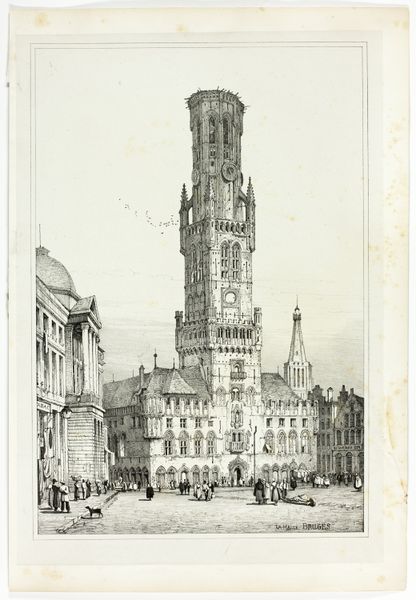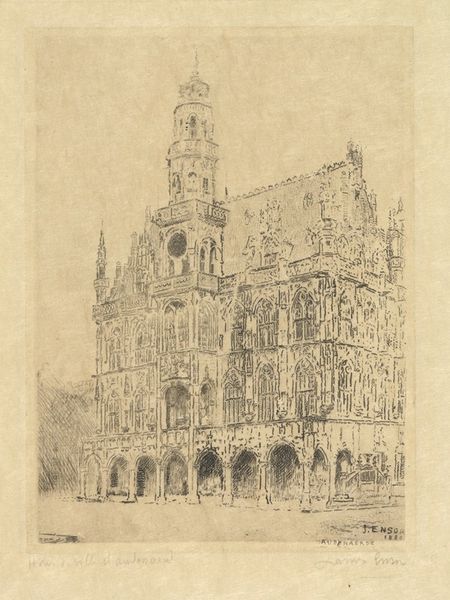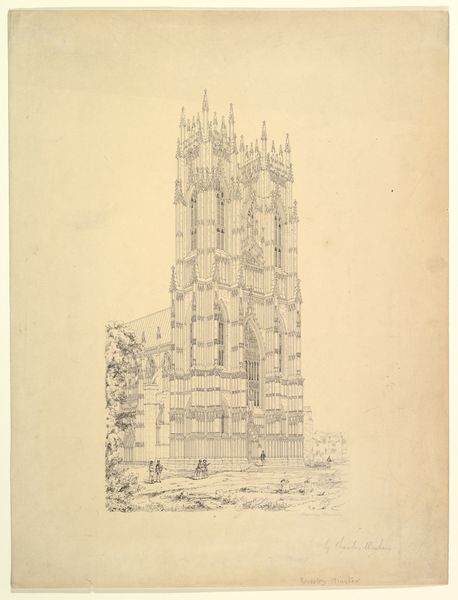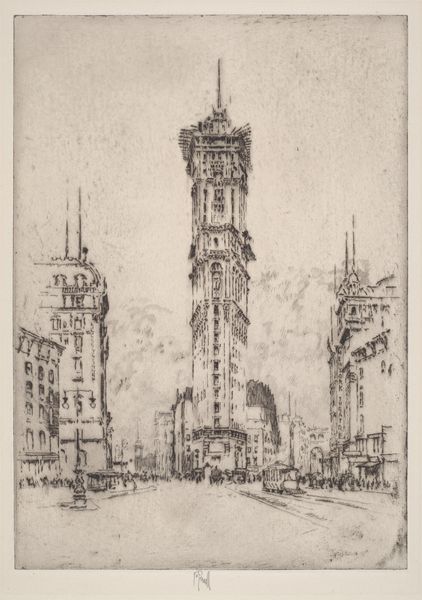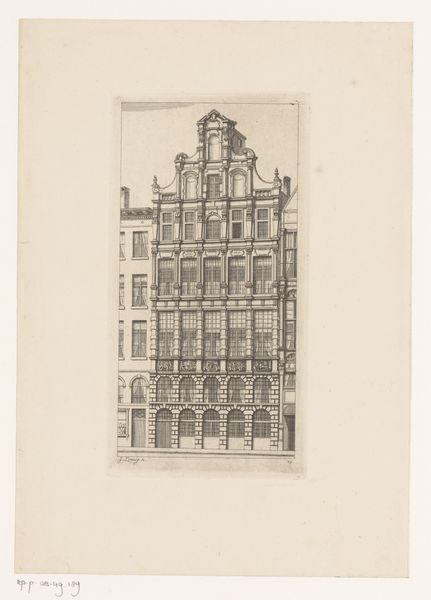
drawing, pencil
#
drawing
#
neoclacissism
#
perspective
#
pencil
#
cityscape
#
realism
Dimensions: overall: 40.2 x 32.6 cm (15 13/16 x 12 13/16 in.)
Copyright: National Gallery of Art: CC0 1.0
Curator: Today we're looking at "Ely Cathedral, Cambridgeshire, S.W. View," a pencil drawing by John Coney, dating back to 1820. Coney was a prominent draughtsman, well-regarded for his detailed architectural renderings. Editor: My first impression is just... imposing. There's a real sense of weight and grandeur captured here. The intricacy of the linework almost overwhelms the page, it's amazing how detailed a building can be made to look like. Curator: Absolutely. Consider the historical context, though. In 1820, England was experiencing a revival of interest in its Gothic past, especially the cathedral. Drawings such as this became popular as a way to document and celebrate England's architectural heritage, as well as bolster British identity. Coney's work served an important function, feeding into both Neoclassical desires for the picturesque and Realist documentation, making it a reflection of his place in his particular moment. Editor: Yes, but I also read something else there, something that hints at the inequalities baked into its design. Monumental structures, historically, have also represented systems of power, built on, quite literally in this case, a foundation of exploited labor. A church is more than what it appears to be. It represents a highly stratified society where immense resources are devoted to non-secular uses, when they could also be used to provide greater public goods. Curator: It is interesting that you use such modern terms as "inequalities" for this church drawing. That would imply an evaluation from a contemporary stance which wasn't there in 1820. We have a contemporary social concern projected back into history that simply does not belong. Editor: I agree to a certain point. Although the values and culture of that time differ somewhat, that does not invalidate the value judgements applied. Our own experiences provide us the means for contextualization. It remains imposing, an architectural achievement to be sure. It still hints at something problematic for those outside its spiritual and symbolic orbit. It would be important to recognize this even within a space of commemoration like this. Curator: Those are insightful observations. Perhaps Coney, consciously or not, has left space for us to project and reflect upon these very issues, almost like a ghostly absence. It adds to the drawing’s layered experience. Editor: Precisely. It goes to show how art is never really static. It keeps being created through its interpretations.
Comments
No comments
Be the first to comment and join the conversation on the ultimate creative platform.
